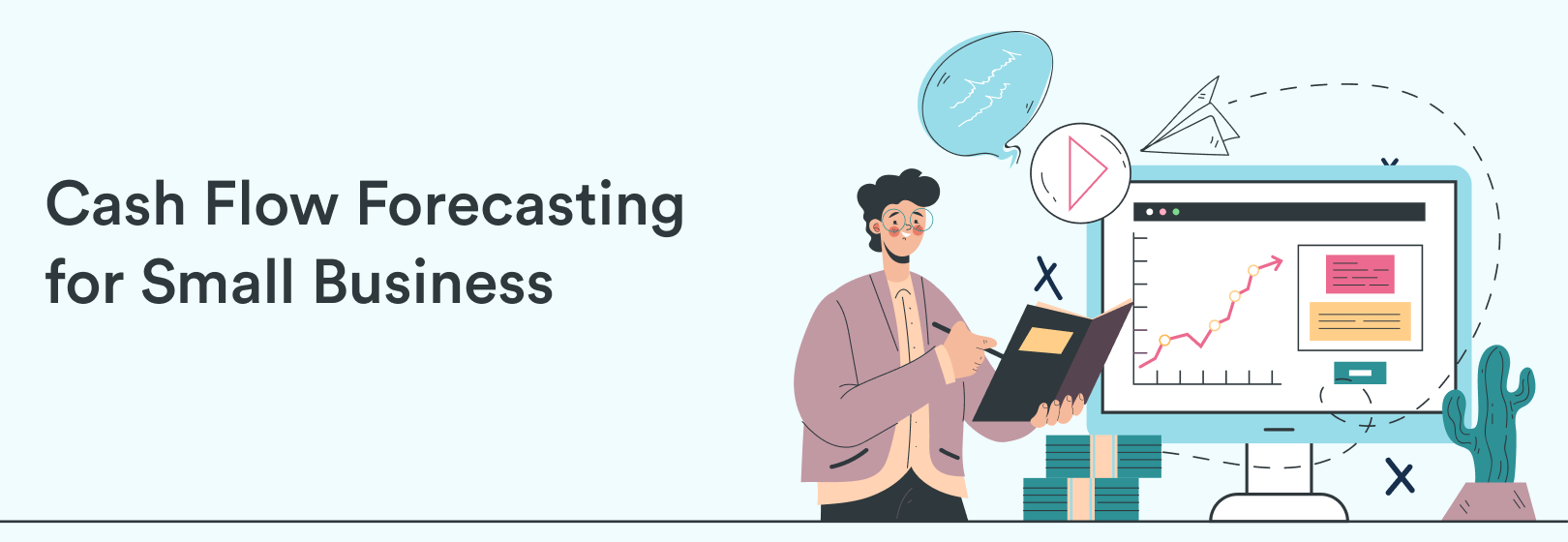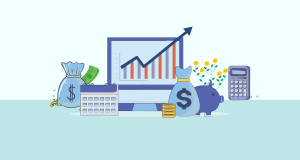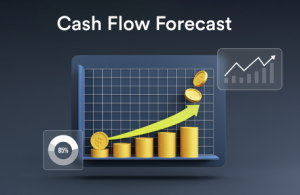Cash flow management continues to be one of the top challenges facing small business owners in 2025. As market volatility increases, inflation worries mount and consumer behaviour shifts in real time, understanding your company’s crystal-clear picture of cash flow is no longer just smart, its life or death.
This guide will help demystify cash flow forecasting for small business owners, explain how to implement and maintain accurate, efficient forecasts, and discuss how to leverage predictions to guide your business strategy.
Overview on Cash Flow Forecasting
Cash flow forecasting is the process of projecting cash movement within your business over a given timescale—whether that’s weekly, monthly, quarterly, or annually. The purpose is to forecast your business’s liquidity so you can keep sufficient cash on hand to meet operational expenses and invest in growth.
Where just the merest wisps of profit and loss statements feature non-cash items (depreciation, for example), cash flow forecasts are solely about real money. That makes them particularly useful in day-to-day business decisions.
The Importance of Cash Flow Forecasting in 2025
Cash is still king in today’s business environment. Business owners find that forecasting helps:
- Prevent cash shortages: Know when you may run out of money and be ready.
- Investments of time: Invest in inventory and marketing equipment when cash will allow.
- Anchor that financial health: Gain better command over payments and receivables.
- Get funding: Lenders and investors frequently request forecasts before they will commit any funds.
- Optimise your strategy: Prepare for economic changes, supply chain disruptions or increased expenses.
But with the emergence of real-time payment systems, AI-driven tools for accounting and automation, 2025 will come with more tools than ever to streamline the forecasting process — if you know how to leverage them.
A Cash Flow Forecast: Its Components
To develop a precise forecast, it is critical to have knowledge of the crucial components:
Cash Inflows
They are all sources of income that your business predicts will be received through the forecast period. Examples include:
- Revenue (from sales of goods/services)
- Individual/customer payments (and/or any associated receivables)
- Loan proceeds or credit lines
- Investment income
- Tax refunds or grants
Cash Outflows
These are go payments you expect to make, for example:
- Rent or mortgage
- Payroll and employee benefits
- Supplier payments
- Loan repayments
- Taxes
- Utilities
- Marketing and advertising
- Insurance and subscriptions
Opening Balance
This is the cash your business has at the beginning of the forecast period.
Net Cash Flow
Via a subtraction of total outflows from total inflows. If positive, your cash is growing; if negative, it may be a signal to reduce your expenses or raise financing.
How to Prepare a Cash Flow Forecast
Step 1: Choose a Timeframe
Monthly forecasts are appropriate for most small businesses; weekly forecasts may be required if you are tight on cash. Long-term planning forecasts produced quarterly or even annually can also work well.
Step 2: Gather Data
Review previous financial statements, invoices, bills and bank statements for insight into patterns. Use tools such as QuickBooks, Xero or Wave Accounting to expedite data collection.
Step 3: Project Cash Inflows
Realistic, not overly optimistic. Consider:
- Your current sales pipeline
- Historical revenue trends
- Seasonality
- Expected payment delays
- Be conservative with uncertain receivables.
Step 4: Estimate Your Cash Outflows
This piece is generally easier to forecast. Start with fixed expenses and recurring payments first, secondly add variable costs like advertising, raw material, or commissions.
Keep in mind upcoming obligations such as taxes, debt repayments or software renewals.
Step 5: Compute Net Cash Flow
For each period, subtract outflows from the inflows. Take your closing balance, which is your closing balance for the next period—and carry over the period balance to the next period.
Read More: What is Ledger Balance?
Step 6: Revisit and Revise Regularly
A forecast is only helpful when it remains up to date. Update it monthly or at least make sure that it reflects new data, new market conditions or unexpected expenses.
Tools for Cash Flow Forecasting in 2025
Technology helps make forecasting easier on all of us. Some tools that you should definitely check out:
Cloud Accounting Software
You can set up forecasts in platforms such as Xero, FreshBooks and QuickBooks Online, where forecasts can be automated based on historical data.
Dedicated Forecasting Tools
Apps such as Float, Futrli and Pulse sit on top of your accounting systems to provide you with a dynamic, visual forecasting dashboard.
AI and Machine Learning
By 2025, many platforms include AI that predicts cash flow trends according to spending patterns and customer behavior.
Custom Spreadsheets
Still a favorite, particularly for small businesses with specific requirements. Excel and Google Sheets provide some flexibility, but take more manual work and financial knowledge.
Read More: Cash Flow Forecasting Made Easy
Common Mistakes to Avoid
Even veteran business owners can get it wrong. Here are traps to avoid:
- Overestimating revenue: Be conservative on sales projections, particularly on new products or services.
- Ignoring late payments: Account for payment delays and bad debts.
- Forgoing one-off costs: Big purchases, tax due dates or legal fees can complicate projections.
- Failing to update forecasts: Think of this as a living document, not a one-time report.
- Mixing personal and business finances: Keep separate accounts, so you always know where you stand.
Cash Flow Forecasting Example (Simple)
| Month | Opening Balance | Inflows | Outflows | Net Cash Flow | Closing Balance |
| January | $5,000 | $10,000 | $8,000 | $2,000 | $7,000 |
| February | $7,000 | $9,500 | $8,200 | $1,300 | $8,300 |
| March | $8,300 | $12,000 | $11,500 | $500 | $8,800 |
This is a stripped version only so that you see how your monthly planning can keep a tap on liquidity trends.
Pro Tips for Better Forecasting
- Create scenarios: Plan for ideal, worst, and most likely outcomes.
- Add a buffer: Always have cash on hand for emergencies.
- Stick to your budget: Your forecast needs to be aligned with your operational plan.
- Track KPIs: Key Metrics such as Days Sales Outstanding (DSO) and Burn Rate can provide further clarity.
- Get professional advice: Accountants or fractional CFOs can help confirm your assumptions and uncover blind spots.
When to Seek Financing
Once you see that your forecast indicates a cash shortfall in the not-too-distant future, it’s time to explore financing options before you’re in a bind. This could include:
- Business lines of credit
- Invoice factoring
- Short-term loans
- Government grants or relief programs
Having the knowledge of when and how much you will need gives you the upper hand in negotiations with the lenders.
Cash Flow Forecasting: The Next Era
In 2025, forecasting is no longer relegated to a back-office activity — it is becoming a piece of the strategic toolkit for modern business-owners. Even solopreneurs can benefit from smart financial planning with tools that sync in real time, offer predictive insights and provide visual dashboards.
Expect future trends like:
- Real-time cash flow updates
- Insights generated using AI on financial health
- Conversational-powered financial reporting
- Integration with neobanking and open banking APIs/compliant
Final Thoughts
Cash flow forecasting isn’t simply about maths — it’s the key to providing your business with a roadmap ahead. Taking the time to project and plan your cash allows your small business to withstand hard times, capitalise on growth opportunities and act confidently.
So, are you a local café owner, an online selling platform, or a service provider? Master cash flow forecasting 2025 & stay one step ahead of the game in resiliency and agility.



